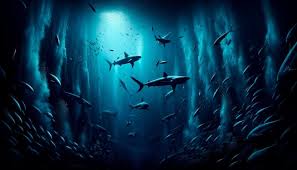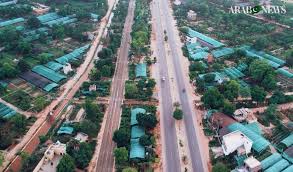The deep ocean is one of Earth’s final frontiers, a vast, mysterious realm that covers more than 60% of our planet’s surface. While it remains largely unexplored, the deep ocean harbors essential ecosystems that support countless marine species and influence global climate systems. Among its many enigmas are dark oxygen zones—regions where oxygen levels are drastically reduced, significantly affecting marine life and ecosystems. Understanding these zones, their causes, and their implications is crucial for the future health of our oceans and the biodiversity they support.
Understanding Dark Oxygen Zones
What Are Dark Oxygen Zones?
Dark oxygen zones, also known as hypoxic or anoxic zones, are areas in the ocean where dissolved oxygen concentrations drop to levels that are insufficient to support most marine life. Hypoxia generally refers to oxygen levels below 2 milligrams per liter, while anoxia denotes a complete lack of oxygen. These zones can occur in both coastal and open ocean environments and are characterized by the absence of the diverse marine life typically found in oxygen-rich waters.
Causes of Dark Oxygen Zones
Dark oxygen zones can arise from various natural and anthropogenic processes:
1. Nutrient Pollution:
One of the leading causes of hypoxia is Deep Ocean nutrient runoff from agriculture and urban areas. Excessive fertilizers enter waterways, leading to algal blooms. Deep Ocean when these blooms die and decompose, oxygen is consumed in the process, resulting in low oxygen levels.
2. Stratification:
The layering of water masses due to temperature differences can prevent mixing between oxygen-rich surface waters and deeper layers.Deep Ocean Warm surface waters can create a barrier that hinders the replenishment of oxygen in the depths.
3. Climate Change:
Rising ocean temperatures are altering circulation patterns and decreasing the solubility of oxygen in water. These changes can exacerbate the development of hypoxic zones, especially in regions already susceptible to low oxygen levels.
4. Natural Processes:
Some areas of the ocean naturally have low oxygen levels due to physical processes such as upwelling, where nutrient-rich but oxygen-poor water rises to the surface.
Mapping Dark Oxygen Zones
Technological Advances in Mapping
Mapping dark oxygen zones is essential for understanding their extent and impact on marine ecosystems. Recent advancements in technology have greatly enhanced our ability to monitor and map these regions.
1. Remote Sensing:
Satellites equipped with sensors can capture surface chlorophyll concentrations and temperature, providing preliminary data on potential hypoxic areas. Remote sensing allows researchers to monitor large areas of the ocean efficiently.
2. Autonomous Underwater Vehicles (AUVs):
AUVs equipped with multi-parameter sensors can explore and gather data at various depths. They provide detailed information about oxygen levels, temperature, salinity, and other critical parameters, allowing for precise mapping of hypoxic zones.
3. Buoy Networks:
Fixed buoys outfitted with monitoring equipment can track oxygen levels over time, helping researchers identify trends and fluctuations in hypoxic conditions. These buoys provide real-time data that can be invaluable for understanding the dynamics of dark oxygen zones.
4. Integrated Models:
Combining satellite data, AUV measurements, and buoy data into predictive models enables scientists to forecast the occurrence of hypoxic zones under various environmental scenarios. These models can help identify regions at risk and inform management strategies.
Recent Mapping Efforts
Recent mapping initiatives have revealed the alarming extent of dark oxygen zones in the world’s oceans. Studies have shown a dramatic increase in the frequency and size of these zones over the past few decades. For example, research conducted in the Gulf of Mexico, a region notorious for hypoxia, has demonstrated that the size of the hypoxic zone has expanded significantly since the 1980s. Similar trends have been observed in coastal areas worldwide, underscoring the urgency of addressing this issue.
Impact on Marine Life
Biodiversity Loss
The effects of dark oxygen zones on marine life are profound and complex. Many marine species, particularly those sensitive to changes in oxygen levels, are directly impacted by hypoxia. Fish, crustaceans, and other marine organisms rely on sufficient oxygen for survival, growth, and reproduction. As oxygen levels decline, these species may experience:
1.Population Declines:
Species that cannot migrate or adapt quickly enough to low oxygen conditions may face significant population declines or even extinction in extreme cases. Species such as cod, flounder, and various crustaceans are particularly vulnerable.
2.Habitat Shifts:
As oxygen levels drop in certain areas, marine species may be forced to migrate to more oxygen-rich waters. This can lead to habitat loss for some species and increased competition in new areas.
3.Altered Community Dynamics:
Changes in species composition due to hypoxia can disrupt local food webs. Predators may struggle to find prey, and the balance of ecosystems can be thrown off, leading to cascading effects throughout the food web.
Specific Examples of Impacted Species
1.Fish:
Many fish species, such as the Atlantic cod and various flatfish, are highly sensitive to oxygen levels. In hypoxic zones, they may exhibit stress responses, reduced growth rates, and altered reproductive success.
2.Benthic Organisms:
Organisms living on or near the seabed, such as mollusks and crustaceans, are particularly vulnerable to hypoxia. Studies have shown that low oxygen levels can lead to decreased biodiversity in benthic communities, affecting overall ecosystem health.
3.Plankton:
Zooplankton, a crucial food source for many marine animals, are also affected by hypoxic conditions. Changes in their abundance and distribution can have ripple effects throughout the marine food web.
Human Implications
The implications of dark oxygen zones extend beyond marine ecosystems; they also pose significant challenges for human communities that rely on healthy oceans.
Fisheries and Food Security
Commercial fisheries are among the most directly impacted by dark oxygen zones. As fish populations decline due to hypoxia, the livelihoods of fishing communities are jeopardized. The loss of economically important species can lead to reduced catches, impacting food security for millions of people who rely on seafood as a primary protein source.
Economic Impact
The economic ramifications of declining fish stocks can be substantial. Reduced catches can lead to decreased revenue for fishing industries, job losses, and increased prices for consumers. Additionally, the costs associated with managing and mitigating hypoxia—such as implementing pollution controls and restoration efforts—can strain local and national economies.
Climate Regulation
The ocean plays a critical role in regulating the global climate by absorbing carbon dioxide and heat. Changes in marine ecosystems due to hypoxia can disrupt this balance, affecting carbon cycling and potentially exacerbating climate change. Healthy marine ecosystems are essential for maintaining the resilience of the ocean’s climate-regulating functions.
Conservation and Mitigation Strategies
Addressing the challenges posed by dark oxygen zones requires a multifaceted approach that combines science, policy, and community engagement.
Policy Changes
Implementing stricter regulations on nutrient runoff and pollution is crucial for reducing the occurrence of hypoxic zones. Policies aimed at sustainable agricultural practices, improved wastewater treatment, and better land-use management can help mitigate nutrient pollution and its impacts on marine ecosystems.
Research Initiatives
Ongoing research is essential for understanding the dynamics of dark oxygen zones and developing effective management strategies. Collaborative efforts among scientists, policymakers, and local communities can foster innovative solutions and adaptive management practices.
Community Engagement
Involving local communities in conservation efforts is vital for fostering stewardship of marine resources. Public awareness campaigns can educate communities about the importance of healthy oceans and the role they play in supporting biodiversity and food security.
Restoration Efforts
Restoration initiatives, such as wetland restoration and habitat protection, can help improve water quality and promote the recovery of marine ecosystems. By enhancing natural filters and buffers, these efforts can reduce nutrient runoff and support the resilience of marine environments.
Conclusion
The dark oxygen zones of the deep ocean present significant challenges to marine life and human communities alike. As we continue to unveil the mysteries of the deep ocean, understanding these zones and their impact becomes increasingly urgent. Mapping dark oxygen zones is not just an academic endeavor; it is a crucial step toward safeguarding the health of our oceans and the biodiversity they support.
As we face the growing threats of climate change and human-induced pollution, our commitment to protecting marine ecosystems must be stronger than ever. By adopting sustainable practices, investing in research, and engaging communities, we can work together to mitigate the impacts of dark oxygen zones and ensure the health of our oceans for generations to come. The time to act is now—before the shadows of the deep ocean become too profound to navigate.




